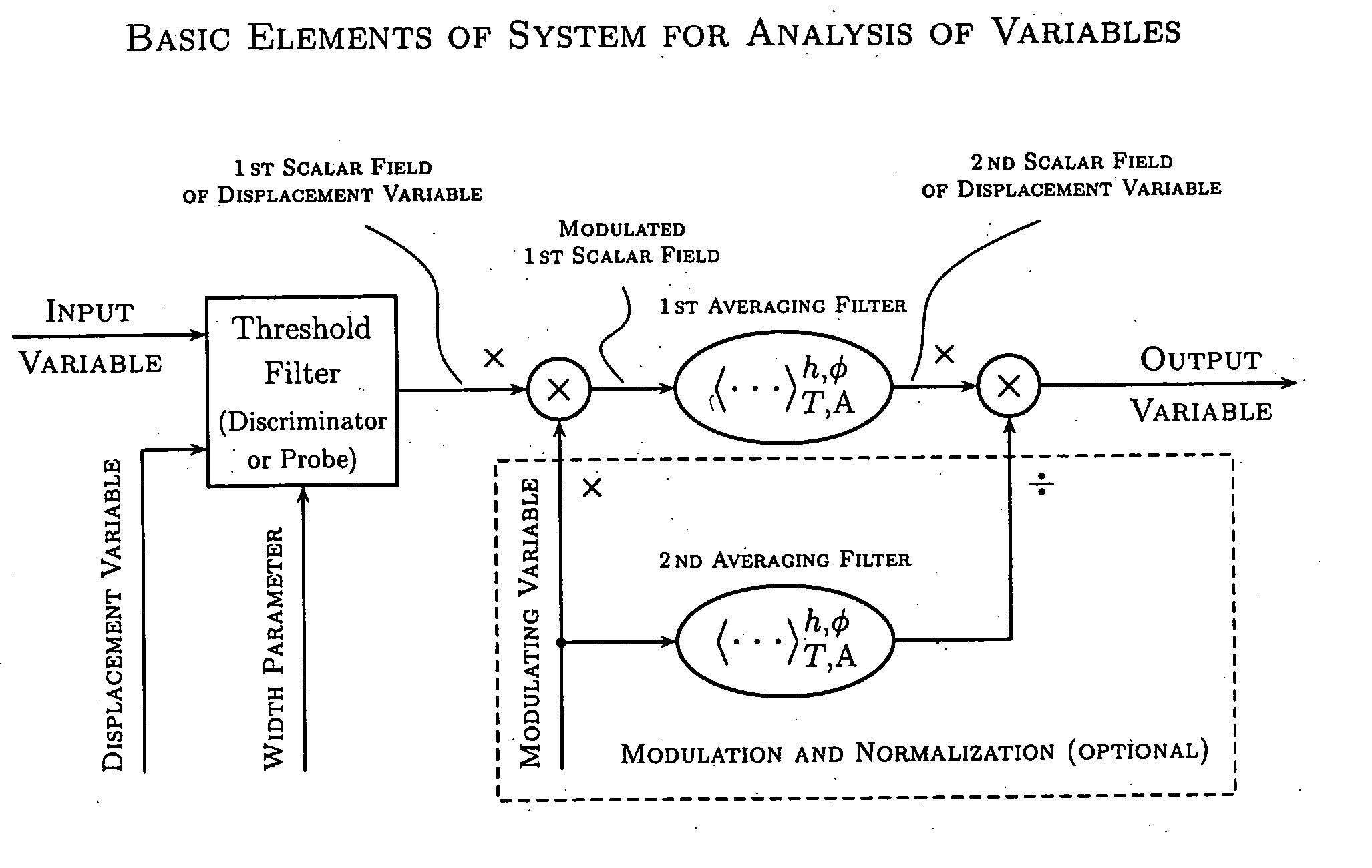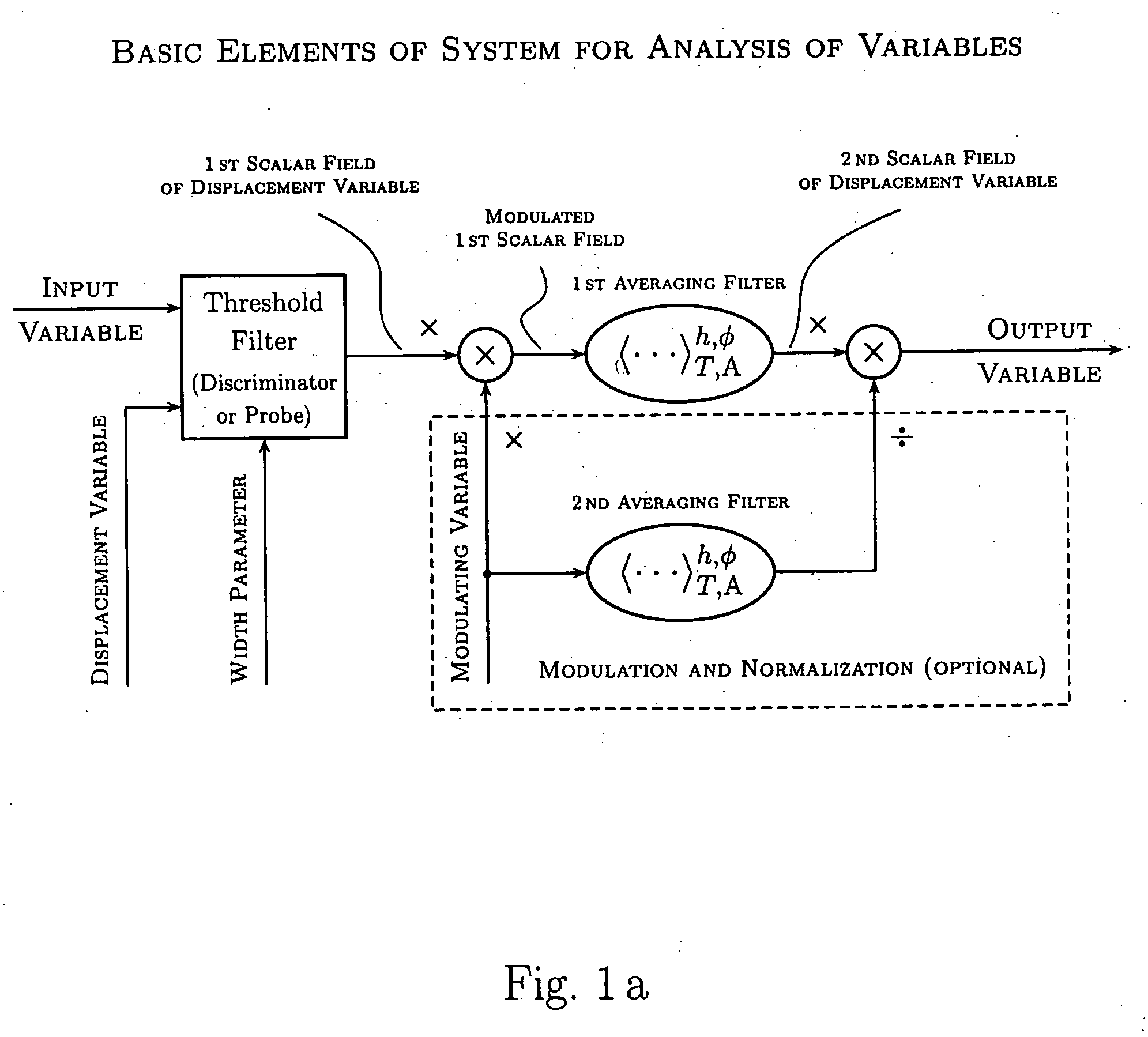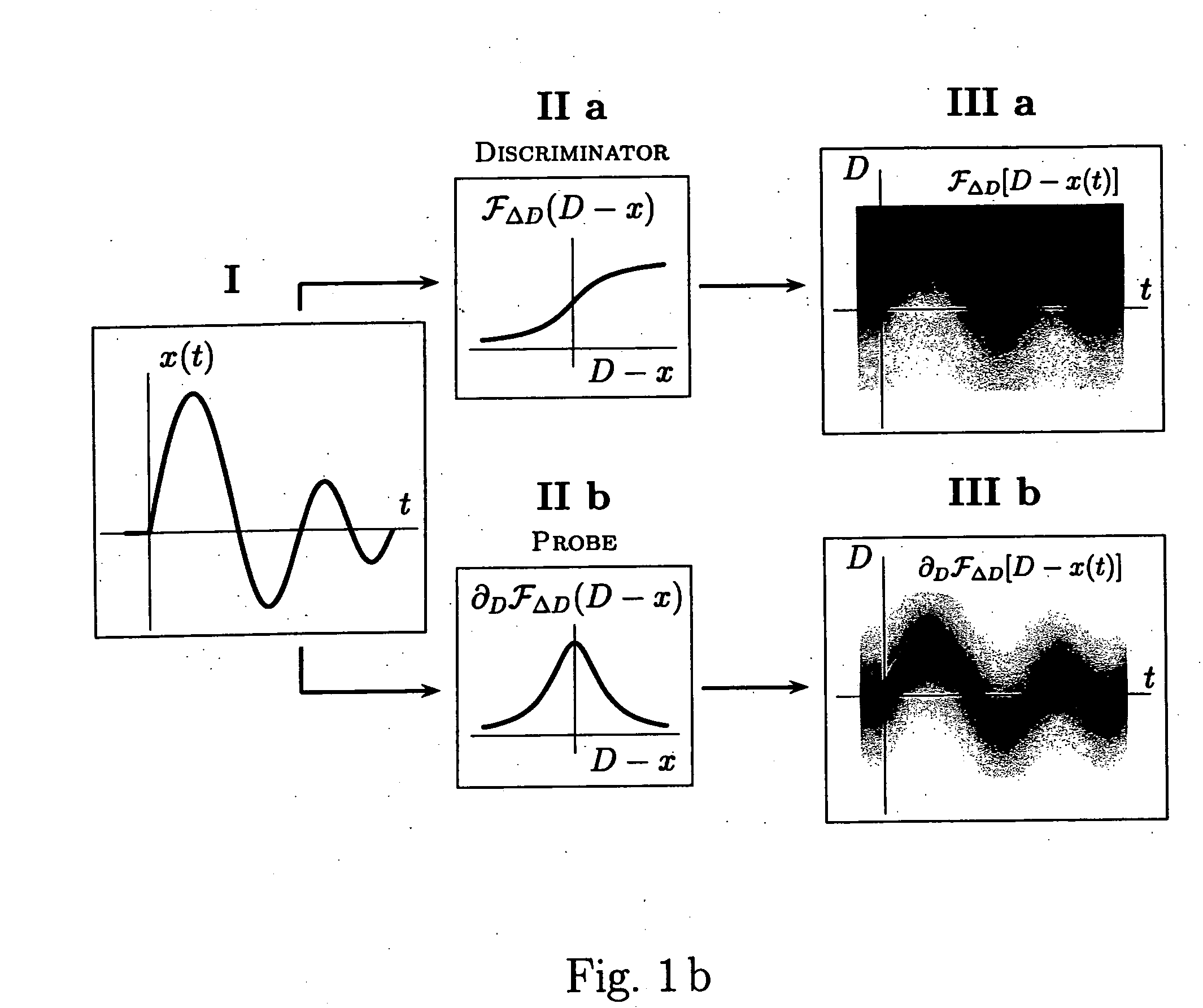Method and apparatus for analysis of variables
- Summary
- Abstract
- Description
- Claims
- Application Information
AI Technical Summary
Benefits of technology
Problems solved by technology
Method used
Image
Examples
Embodiment Construction
is organized as follows.
[0090] In Section 1 (p. 34) we identify the general form of a variable which is subject to analysis by this invention, and provide several examples demonstrating the convenience of such a general representation.
[0091] In Section 2 (p. 35) we use the example of a single scalar variable to describe the basic elements of the analysis system adopted in this disclosure, and introduce the discriminators and probes as the sensors of such a system. The example of a single scalar variable is used to illustrate that the use of discriminators and probes enables us to reformulate many algebraic problems of the conventional analysis of variables as geometrical problems in the threshold space. The particular continuous fashion in which this geometrical extension is performed enables the solution of these problems by methods of differential geometry.
[0092] In Section 3 (p. 39) we describe some of the exemplary discriminators and the respective probes.
[0093] In Section 4 (p....
PUM
 Login to View More
Login to View More Abstract
Description
Claims
Application Information
 Login to View More
Login to View More - R&D
- Intellectual Property
- Life Sciences
- Materials
- Tech Scout
- Unparalleled Data Quality
- Higher Quality Content
- 60% Fewer Hallucinations
Browse by: Latest US Patents, China's latest patents, Technical Efficacy Thesaurus, Application Domain, Technology Topic, Popular Technical Reports.
© 2025 PatSnap. All rights reserved.Legal|Privacy policy|Modern Slavery Act Transparency Statement|Sitemap|About US| Contact US: help@patsnap.com



